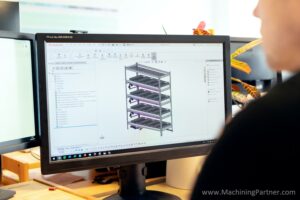Computer Numerical Control (CNC) programming is a crucial aspect of the semiconductor industry, as it enables the precise and efficient production of various types of semiconductor devices. In this article, we will explore the basics of CNC programming, its applications in the semiconductor industry, and the benefits it offers.
What is CNC Programming?
CNC programming involves the use of computer software to control and automate the machining process of various types of manufacturing equipment, including lathes, mills, and 3D printers. The process involves the creation of a set of instructions, known as a program, which specifies the movements and actions of the manufacturing equipment. These instructions are typically written in a specialized programming language, such as G-code or M-code, which is understood by the CNC controller.
The CNC controller is a central computer system that interprets the instructions in the program and sends signals to the manufacturing equipment to execute the desired actions. This enables the equipment to produce precise and repeatable results, as the program can be easily modified and rerun if necessary.
Applications in the Semiconductor Industry
The semiconductor industry relies heavily on CNC programming for the production of various types of devices, including microchips, sensors, and optoelectronic devices. These devices are typically produced using photolithography, a process that involves the patterning of thin films of material on a substrate using light exposure and chemical etching.
CNC programming is used to control the various steps in the photolithography process, including the alignment and positioning of the substrate, the exposure of the pattern onto the substrate, and the development and etching of the pattern. This enables the production of high-precision devices with complex structures and geometries.
In addition to photolithography, CNC programming is also used in the production of semiconductor packaging and assembly, where it is used to control the machining and assembly of various components.
Benefits of CNC Programming
There are several benefits to using CNC programming in the semiconductor industry:
- Improved Precision: CNC programming enables the production of highly precise devices with complex structures and geometries. This is especially important in the semiconductor industry, where the performance of devices is often limited by their physical dimensions and shape.
- Increased Efficiency: CNC programming allows for the automation of many manufacturing processes, which can increase the speed and efficiency of production. This can result in cost savings and reduced lead times for the production of semiconductor devices.
- Enhanced Quality: CNC programming enables the production of consistent and high-quality devices, as the program can be easily modified to correct any errors or defects. This can reduce the risk of defects and improve the reliability of the devices.
- Greater Flexibility: CNC programming allows for the quick and easy modification of the manufacturing process, which can enable the production of a wide range of devices with different structures and geometries.
Conclusion
CNC programming is a crucial aspect of the semiconductor industry, as it enables the precise and efficient production of various types of devices. The use of CNC programming offers several benefits, including improved precision, increased efficiency, enhanced quality, and greater flexibility. As a result, CNC programming will continue to play a vital role in the production of semiconductor devices in the future.


